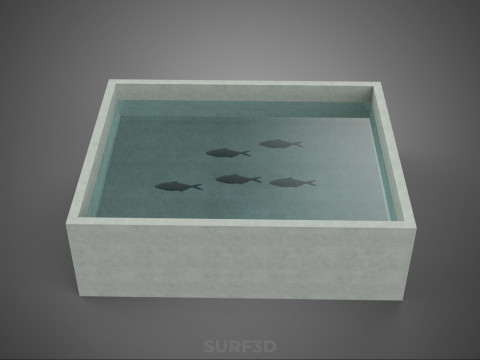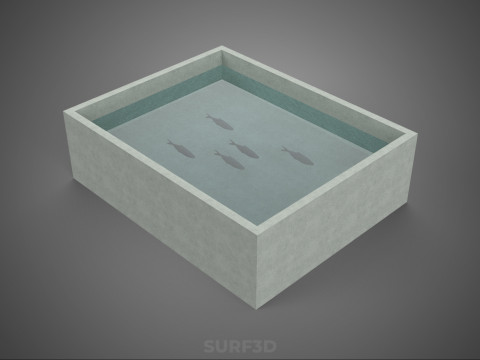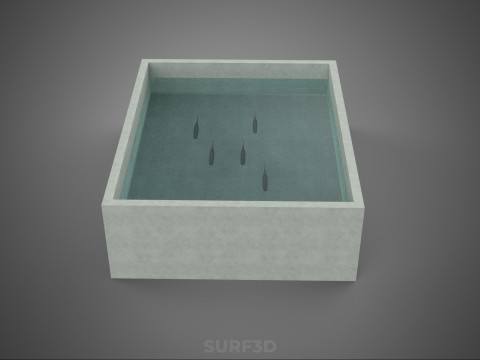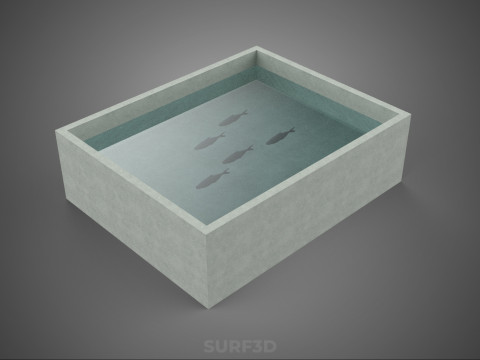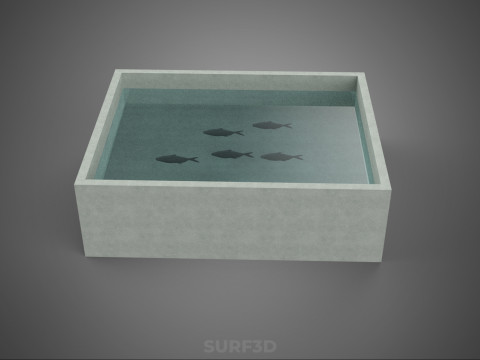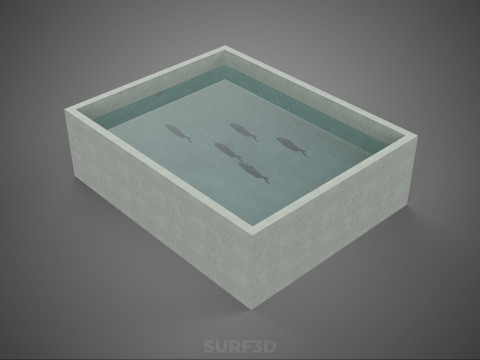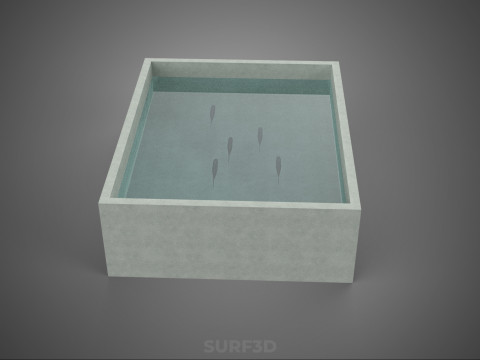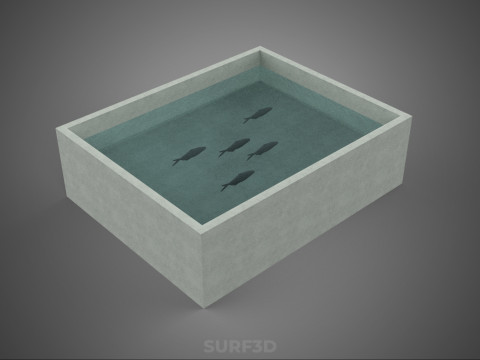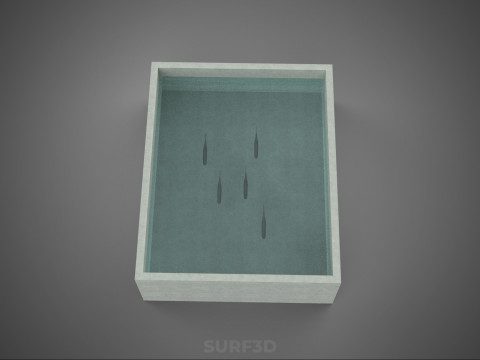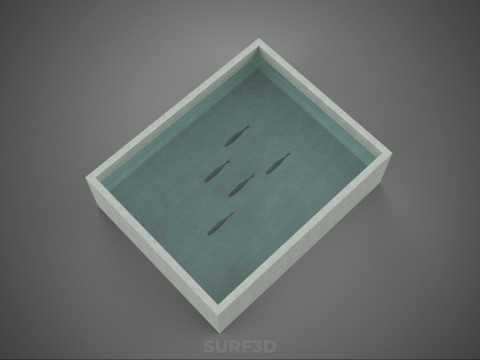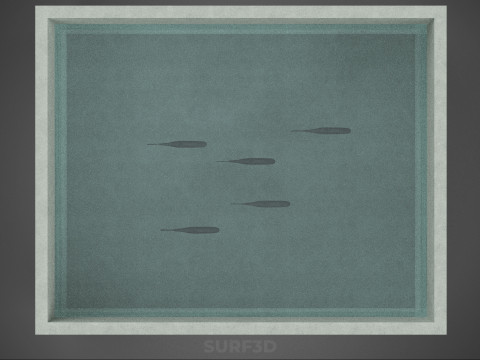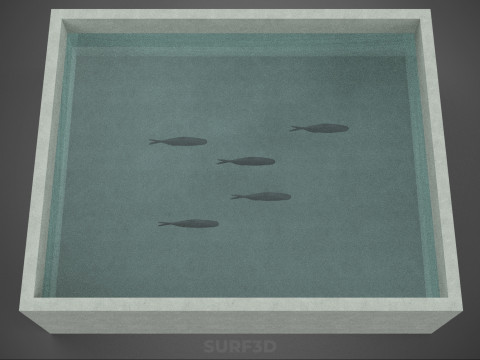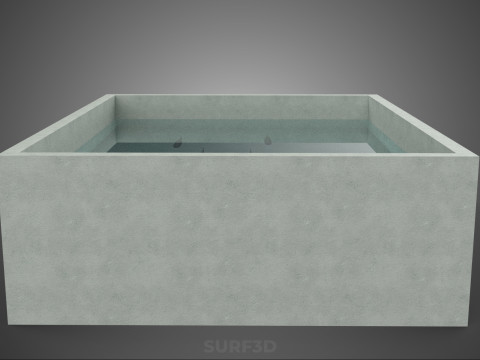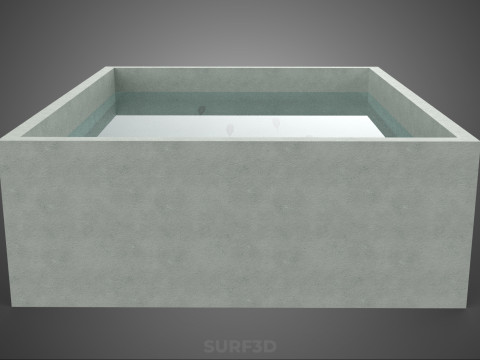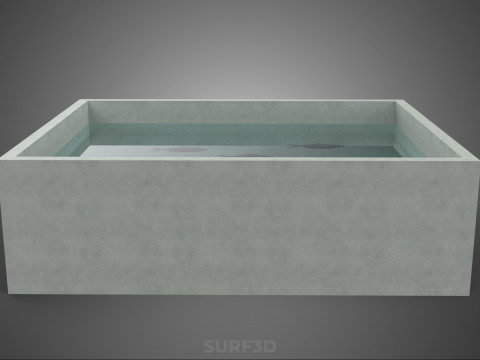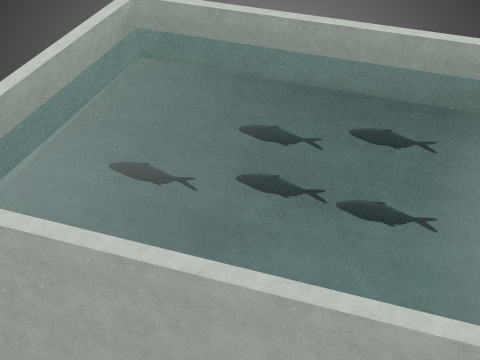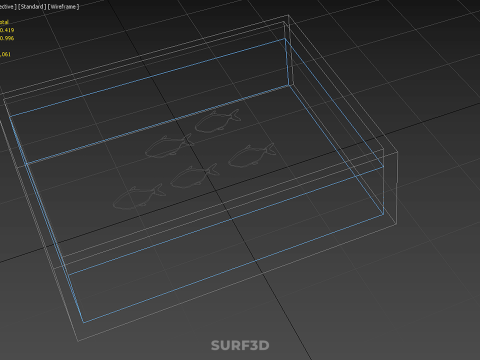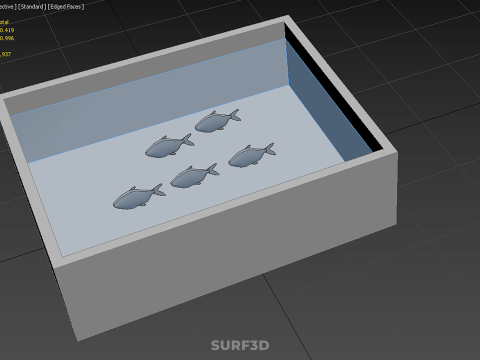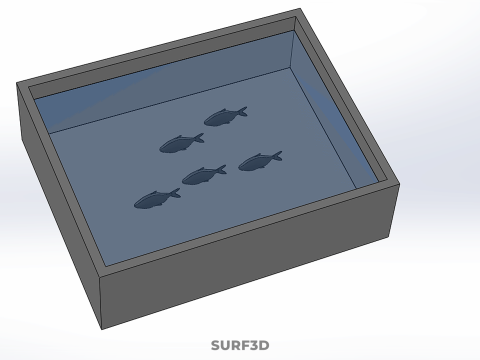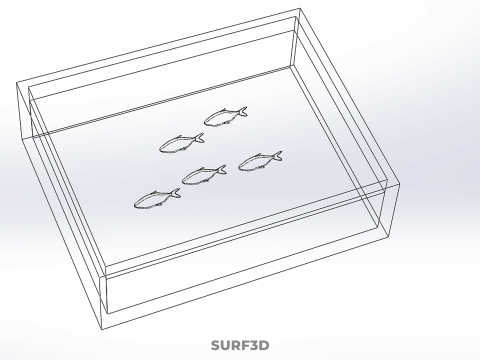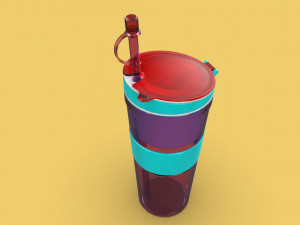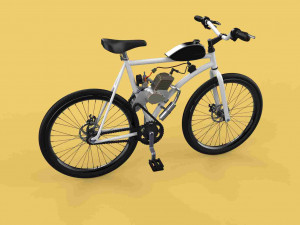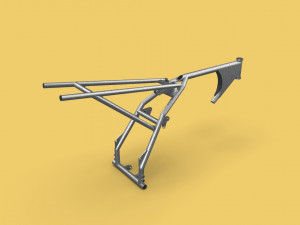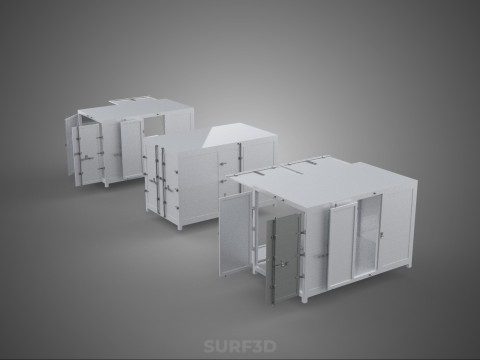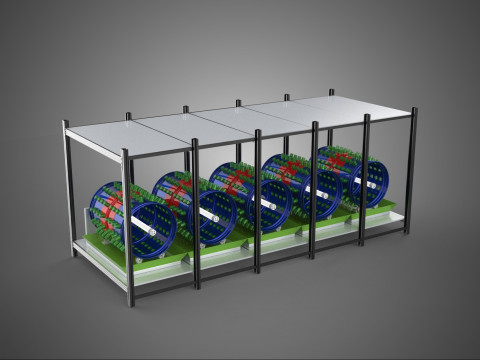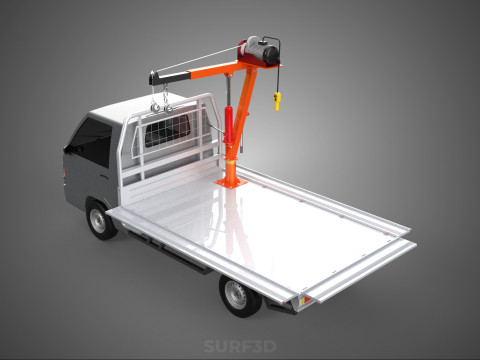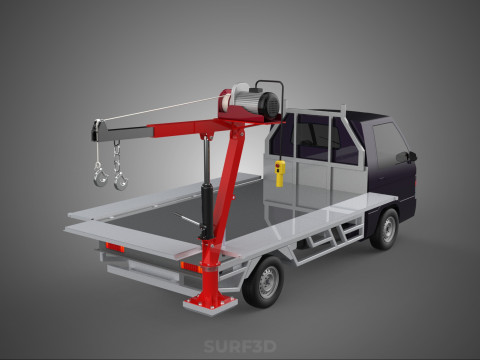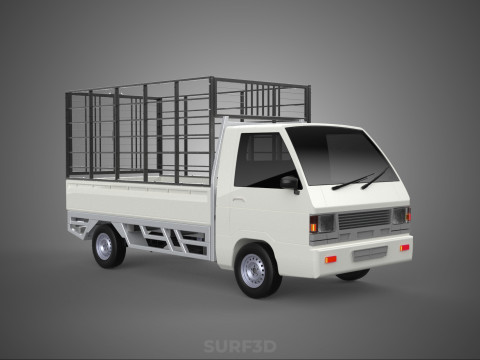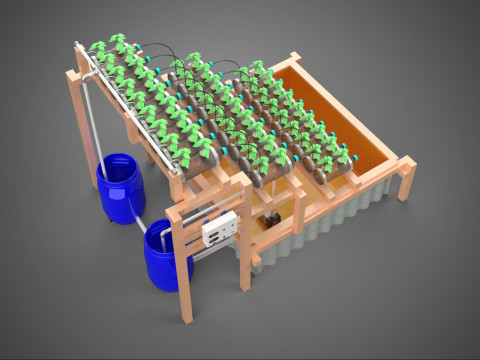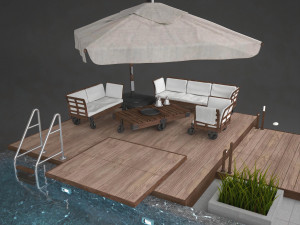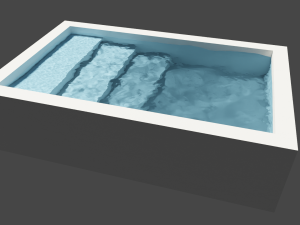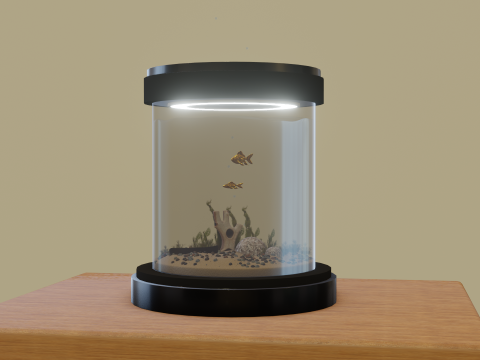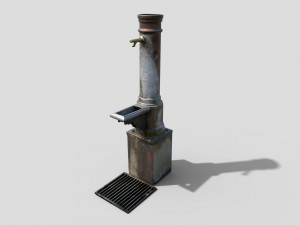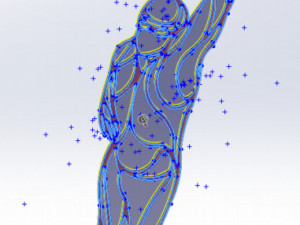FISH SWIMMING CONCRETE WATER TANK CONTAINER POND POOL AQUA BASIN 3D Model
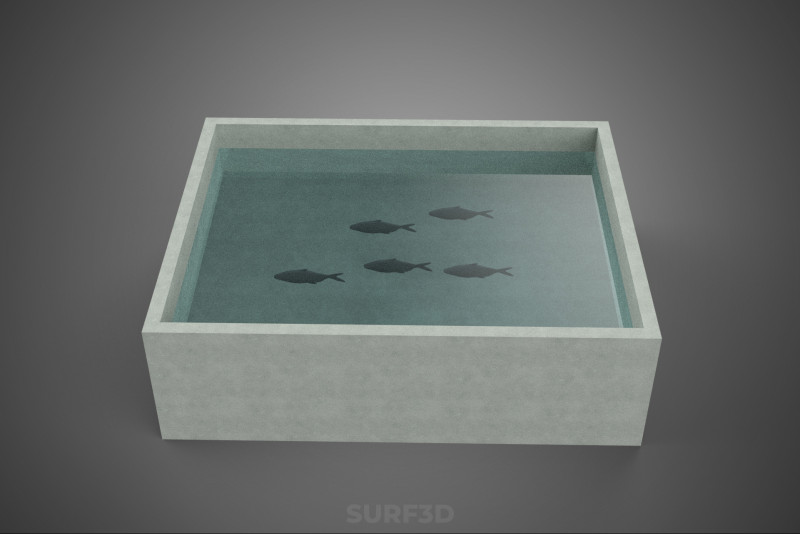
- Available formats: Rhinoceros (.3dm) 1.00 MB3D Studio (.3ds) 219.82 kbBlender3D (.blend) 597.30 kbCollada (.dae) 437.51 kbAutodesk AutoCAD (.dwg) 1.37 MBAutodesk FBX (.fbx) 842.88 kbGLB (.glb / .gltf) 308.42 kbIGES (.iges) 186.26 kbAutodesk 3DS MAX (.max) 1.66 MBWavefront OBJ (.obj) 387.71 kbACIS(.sat) 1.18 MBSketchUp (.skp) 499.35 kbSTEP (.step) 301.28 kbStereolithography (.stl) 566.47 kb
- Polygons:30419
- Vertices:20996
- Animated:No
- Textured:No
- Rigged:No
- Materials:
- Low-poly:No
- Collection:No
- UVW mapping:No
- Plugins Used:No
- Print Ready:No
- 3D Scan:No
- Adult content:No
- PBR:No
- AI Training:No
- Geometry:Poly NURBS
- Unwrapped UVs:Unknown
- Views:265
- Date: 2025-08-26
- Item ID:594833
High-quality 3D assets at affordable prices — trusted by designers, engineers, and creators worldwide. Made with care to be versatile, accessible, and ready for your pipeline.
Included File Formats
This model is provided in 14 widely supported formats, ensuring maximum compatibility:
• - FBX (.fbx) – Standard format for most 3D software and pipelines
• - OBJ + MTL (.obj, .mtl) – Wavefront format, widely used and compatible
• - STL (.stl) – Exported mesh geometry; may be suitable for 3D printing with adjustments
• - STEP (.step, .stp) – CAD format using NURBS surfaces
• - IGES (.iges, .igs) – Common format for CAD/CAM and engineering workflows (NURBS)
• - SAT (.sat) – ACIS solid model format (NURBS)
• - DAE (.dae) – Collada format for 3D applications and animations
• - glTF (.glb) – Modern, lightweight format for web, AR, and real-time engines
• - 3DS (.3ds) – Legacy format with broad software support
• - 3ds Max (.max) – Provided for 3ds Max users
• - Blender (.blend) – Provided for Blender users
• - SketchUp (.skp) – Compatible with all SketchUp versions
• - AutoCAD (.dwg) – Suitable for technical and architectural workflows
• - Rhino (.3dm) – Provided for Rhino users
Model Info
• - All files are checked and tested for integrity and correct content
• - Geometry uses real-world scale; model resolution varies depending on the product (high or low poly)
• • - Scene setup and mesh structure may vary depending on model complexity
• - Rendered using Luxion KeyShot
• - Affordable price with professional detailing
Buy with confidence. Quality and compatibility guaranteed.
If you have any questions about the file formats, feel free to send us a message — we're happy to assist you!
Sincerely,
SURF3D
Trusted source for professional and affordable 3D models.
More Information About 3D Model :
A **Rectangular Concrete Aquatic Enclosure**, often variably termed a water tank, container, pond, pool, or aqua basin, is a robust, purpose-built structure primarily constructed from reinforced concrete, designed to contain significant volumes of water for the ha***ation, cultivation, or display of aquatic organisms, most notably fish. Characterized by its rectilinear geometry, this type of basin provides a stable, controlled environment for fish swimming and various other aquatic life, serving a wide array of functions from intensive aquaculture and research to ornamental display and public aquaria. Its durable construction material and defined shape are central to its utility and longevity in managing aquatic ecosystems.
**Nomenclature and Typology:**
The varied terminology associated with these structures reflects nuances in scale, intended use, and aesthetic integration. A "tank" or "container" often denotes a more industrial or utilitarian unit, common in commercial aquaculture for breeding, grow-out, or quarantine purposes. A "pond" or "pool" might imply larger dimensions or a more integrated design within a landscape, potentially with greater aesthetic consideration, even if constructed from concrete. "Aqua basin" serves as a broader, more generic term encompassing any artificial, water-holding structure. Despite these distinctions, the underlying engineering principles and material science remain consistent: a sealed, water-retaining concrete vessel.
**Construction and Engineering:**
The primary construction material, reinforced concrete, is selected for its inherent strength, durability, and ability to form monolithic, watertight structures. The rectangular shape is frequently chosen for its efficiency in space utilization, ease of construction (particularly with formwork), and straightforward integration into larger systems or existing architecture.
* **Materials**: High-strength, low-permeability concrete mixes are typically employed, often incorporating waterproofing admixtures to enhance impermeability. Steel reinforcement bars (rebar) are crucial for providing tensile strength, preventing cracking due to hydrostatic pressure, thermal expansion/contraction, and ground movement.
* **Design**: Structural engineers design these basins to withstand the significant hydrostatic pressure exerted by the contained water, as well as external soil pressures if the structure is partially or fully buried. Foundations must be stable and properly drained to prevent settlement or uplift.
* **Lining and Sealing**: While concrete itself can be made highly impermeable, additional waterproofing measures are common. These may include epoxy coatings, polymer liners, or specialized cementitious overlays applied to the interior surfaces. Such linings ensure absolute water retention, prevent concrete leaching (which can affect water chemistry, particularly pH), and provide a smooth, easily cleanable surface that minimizes ha***at for undesirable pathogens.
* **Dimensions**: Sizes vary widely, from small experimental tanks of a few hundred liters to massive production ponds spanning thousands of cubic meters. Depth is also a critical design parameter, influencing water volume, thermal stability, and the specific needs of the aquatic inha***ants.
**Function and Applications:**
These concrete basins are highly versatile in their applications across various sectors:
* **Aquaculture**: Essential for intensive fish farming, enabling precise control over water quality, feeding regimens, and disease management. They are used for various life stages, from hatchery and nursery operations to grow-out and broodstock facilities for commercially important species (e.g., tilapia, trout, salmon, shrimp) and ornamental varieties.
* **Research and Education**: They provide controlled, replicable environments for studying aquatic biology, toxicology, and ecological processes in universities and research institutions, facilitating experiments requiring standardized conditions.
* **Public Aquaria and Zoos**: Large concrete tanks form the backbone of many public exhi***s, housing diverse aquatic species in aesthetically designed, robust enclosures capable of supporting complex, multi-species displays.
* **Ornamental Ponds**: While often associated with more naturalistic designs, concrete can be utilized for formal, rectilinear garden ponds, offering superior durability and permanence, particularly for housing koi or other large ornamental fish.
* **Quarantine and Holding**: Used in fisheries and the pet trade for isolating new arrivals, treating sick fish, or holding stock before transfer or sale.
**Environmental Control Systems:**
Effective operation necessitates the integration of sophisticated life support systems to maintain a healthy aquatic environment:
* **Filtration**: Mechanical filtration removes particulate matter, while biological filtration (e.g., biofilters) converts toxic ammonia and nitrites into less harmful nitrates.
* **Aeration and Oxygenation**: Air pumps, diffusers, or pure oxygen injection systems are employed to maintain adequate dissolved oxygen levels essential for fish respiration.
* **Water Circulation**: Pumps ensure proper water movement through filtration systems and even distribution of oxygen and nutrients throughout the basin.
* **Temperature Control**: Heaters or chillers may be utilized to maintain optimal water temperatures for specific aquatic species, particularly in aquaculture or research settings.
* **Water Quality Monitoring**: Sensors and regular testing protocols are crucial for tracking key parameters such as pH, ammonia, nitrite, nitrate, dissolved oxygen, salinity (for brackish/marine systems), and alkalinity.
**Advantages and Considerations:**
* **Advantages**: High durability and longevity; resistance to puncture and UV degradation (unlike many liner materials); capacity for exceptionally large volumes of water; significant thermal mass aids in temperature stability; allows for robust integration of complex plumbing and drainage systems; provides a stable platform for heavy equipment and observation.
If you need a different format, please send us a Conversion Request. We can convert 3D models to: .stl, .c4d, .obj, .fbx, .ma/.mb, .3ds, .3dm, .dxf/.dwg, .max. .blend, .skp, .glb. We do not convert 3d scenes and solid formats such as .step, .iges, .stp, .sldprt etc!


 English
English Español
Español Deutsch
Deutsch 日本語
日本語 Polska
Polska Français
Français 中國
中國 한국의
한국의 Українська
Українська Italiano
Italiano Nederlands
Nederlands Türkçe
Türkçe Português
Português Bahasa Indonesia
Bahasa Indonesia Русский
Русский हिंदी
हिंदी